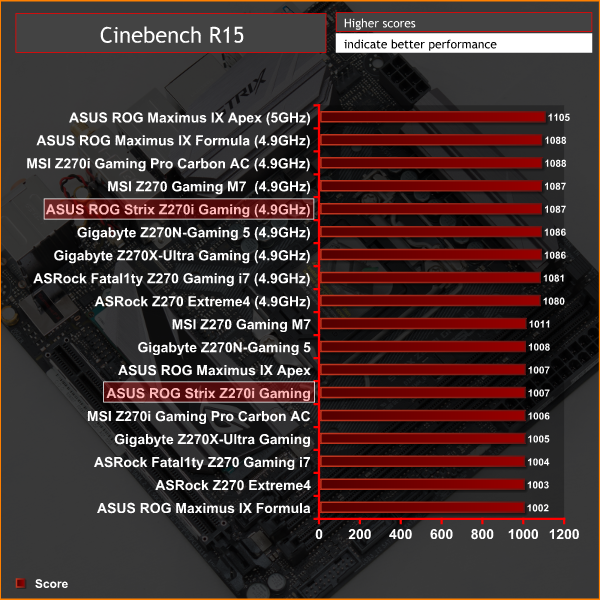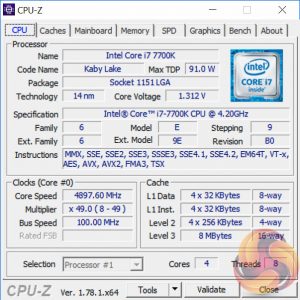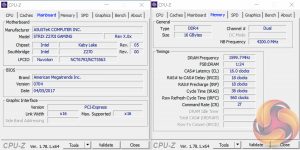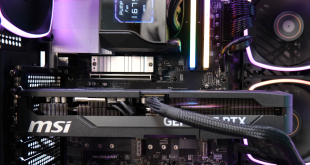Overclocking is rather predictable for Kaby Lake CPUs once the established maximum frequency of a CPU is determined within acceptable voltage parameters. In our case, we don't like to push beyond 1.35~1.375 volts and using that as an upper maximum voltage up to 4.9GHz was stable. As we noticed on other boards, 5GHz will boot but will fall over under extreme load scenarios.
For 4.9GHz we could achieve this with as little as 1.312 volts which was achieved with an offset of 0.075v from the auto voltage and all other parameters (such as LLC) left to Auto. Voltage droop does occur using Auto LLC but that's not because there is anything inherently wrong with the power delivery system. It's easy to set the voltage to not drop below a certain value if you set the LLC accordingly (the High value or “higher”).
3600MHz XMP Memory:
We test the motherboard's ability to run G.Skill's high-speed 16GB DDR4 Trident Z kit at a 3600MHz XMP setting. High-speed XMP settings can prove a challenge for motherboard designers when optimising the settings for stability at the intended DRAM frequency.
ASUS ROG Strix Z270i Gaming executed the XMP 3600MHz profile of our G.Skill Trident Z 16GB (2 x 8GB) memory kit with no hesitation.
Overclocked Performance
As a performance comparison, we have included the results from eight other Z270 motherboards. The maximum overclocked configuration achieved with any other board was a 4900MHz (49 x 100MHz) or 5000MHz (50 x 100MHz) processor frequency whilst using 3200MHz CL16 memory.

Overclocked performance is in-line with the competition.
Power
We leave the system to idle on the Windows 10 desktop for 5 minutes before taking a reading. For CPU load results we run AIDA64 CPU, FPU, and Cache stress tests and take a reading. The power consumption of our entire test system (at the wall) is shown in the chart.

Power consumption at idle and load was good and there's a reasonable efficiency saving for mini-ITX users over ATX equivalent systems.
 KitGuru KitGuru.net – Tech News | Hardware News | Hardware Reviews | IOS | Mobile | Gaming | Graphics Cards
KitGuru KitGuru.net – Tech News | Hardware News | Hardware Reviews | IOS | Mobile | Gaming | Graphics Cards





This needs to be released as a x370, and I would buy it instantly.